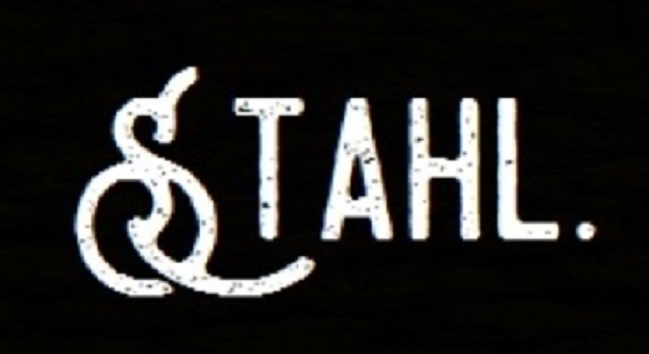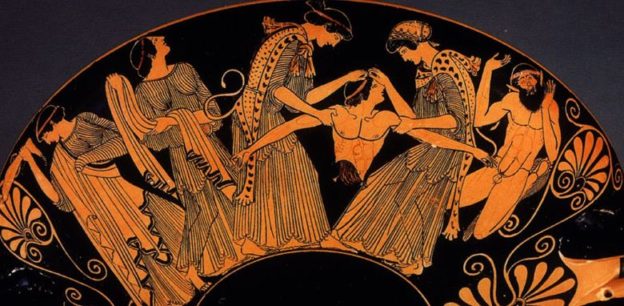In my last post I dealt with the role of Foucauldian thought in the cultural history of Metal music. I want to take up this perspective and apply it to another, rather ‘fuzzy’ subject of Metal music research. In 1998, the Dutch female-fronted group The Gathering, on their album ‘How to Measure a Planet?’,1 released a song called ‘Red Is a Slow Colour’. This title seems to be enigmatic, even paradoxical: how can a colour have a speed as one of its constituting, maybe metaphysical or ontological qualities? Yet, the song’s title, in its proper context, seemed to ‘work’. It was well received, the album critically acclaimed.
Thinking of this supposed paradox is my starting point. I want to focus on a fundamental element of Metal culture, since its historical origins: the colour black. I want to put forward the hypothesis that this colour (as an essential discursive quality in music, texts, aesthetics, in all form of practical, mental and physical practices) had a constitutive and, later even transcending historical quality in Heavy Metal. This colour made Metal become Metal, and, later, it opened up discursive links to other fields of culture, in popular music, society, literature, everyday practices. From the view of cultural history, the colour black is a transcending historical force in Metal music’s past and present.2
Constructing the colour framework of Metal music
It is rather obvious that, since the late 1960s and early 1970s, black is the central optical quality (in terms of colour) in Metal music history. The ‘godfathers’ of Heavy Metal, Black Sabbath, made this colour, taking up the title of a 1963 horror movie directed by Mario Bava,3 a part of their name. Thus, since its ‘birth’ Heavy Metal was associated with blackness as a constitutive quality of its aesthetics, lyrics, musical qualities; its discursive culture of imagination.
Later in Metal history, in the 1980s and 1990s, Metal music took up inspiration from bands of the ‘New Wave’ and ‘Gothic Rock’ music genres – subcultures which are part of what is called ‘Die Schwarze Szene’ (literally: ‘the Black Scene’) in German language until today. In the 1990s, in Gothic, Death and Black Metal subcultures, black, again, was a central point of reference – in terms of mood, melancholy, identities and practices. That the latter subgenre even was called Black Metal is the most obvious hint at the central role of blackness in Metal music history.
And, on 12th August 1991, Thrash Metal pioneers Metallica released their eponymous album which commonly is simpley refered to as the ‘Black Album’.4 Its famous cover is painted in monochromical black, showing, rather hard to see, a snake and the band’s logo. Historically speaking, the colour framework of Metal (in terms of aesthetics, narratives of mood, practices in concerts etc.) is the result of a process of over 47 years of discursive construction since arond 1970. It is the history of a cultural framework of interpretation which made black become a central quality of its discourse. Black, as a word, a narrative, a mood, a sheer mass of practices, encodes central aspects and facets of Metal.
Cultural history makes us aware that, following Foucauldian paradigms, this history did not happen ‘automatically’ or ‘by itself’; but was the history of ever and ever again constructing the black framework of Metal, in negation processes between artists, fans and all agents involved. Cultural and socological research in Metal Music Studies is able to show this central sztructural quality of the colour black.5 But, only history and especially cultural history as a scientific mode of historical narration, really can show its deep historical roots in the 20th century and earlier epochs – by telling this history scientifically.
Black as a culturally transcending force in Metal music history
This is where my perspective as a cultural historian comes in. By applying this view, we can tell the history of the colour black in Metal as the history of a cultural element which has a special and own historical quality. Not only is the history of black in Metal the history of one of its constitutive codes of cultural logics; historically, seen from a view of longue durée, black was a historical force which broke boundaries and transcended from earlier and synchronical cultures into Metal, and diachronically, later, went past Metal.
Black Sabbath defined Metal and took their colour inspiration from a 1963 horror movie: here, black served as a tool to historically transfer moods of horror from movie and cinematic cultures into Metal – and beyond, until today. The ‘Black Album’ by Metallica, historically seen, was not only the record which made them burst into mainstream: here, in 1991, the aesthetics of the album, its cover and discourse of blackness, build the historical force that made possible the transgression into mainstream. From a historian’s view, for the band, stressing blackness was a cultural key move to wider acceptance, recognition and fame.
Concluding, this leads me to a cultural-historical hypothesis on the role of the colour black in Metal: since around 1970, black has not only been a constitutive cultural code for Metal identity itself. More than this, it has been a temporally, synchronically and diachronically, transcending force of culture. Historically speaking, the colour black drove Metal music history.
Cf. The Gathering, How to Measure a Planet, released 9th November 1998, Century Media Records ↩
For the discourse on colours, cf. Harald Braem, Die Macht der Farben, Munich 2003; Harald Küppers, Die Logik der Farbe. Theoretische Grundlagen der Farbenlehre. Callwey and Munich 1981; especially, on the colour of black, cf. Michael Pastoureau, Black: The History of a Colour, Princeton 2008. ↩
Cf. Black Sabbath, original title: I tre volti della paura, directed by Mario Bava, released on August 17th 1963 by Emmepi Cinematografica e.a. ↩
Cf. Metallica, Metallica, released 12th August 1991, Elektra/Vertigo Records ↩
For instance, cf. Deena Weinstein, Rock’n America. A Social and Cultural History, New York 2015; Jeremy Wallach e.a, (eds.), Metal Rules the Globe: Heavy Metal Music around the World, Durham 2011. ↩




